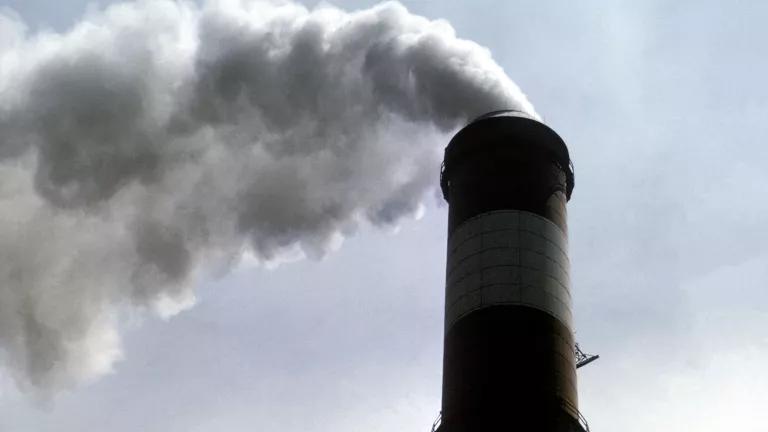
Guest Blog by Madhura Joshi
The Trump Administration officially started the process to withdraw the United States from the Paris Agreement this week. But on the other side of the world, India is making strong progress toward its Paris commitments. While there is much more needed, India’s Nationally Determined Commitments (NRDC) under the Paris Agreement are one of the few that are compatible with the “2 degree Celsius” emissions trajectory scenario.
India is also one of the few countries on track the meet 2 of its 3 key NDC commitments—40% of non-fossil fuel installed power capacity and 33-35% emissions reductions over 2005 in 2030. India is likely to achieve these goals sooner and go beyond them by 2030. Yet, the third goal of creating a carbon sink of 2.5 to 3 billion tons of carbon dioxide equivalent additional forest and tree cover by 2030, requires more work.
India’s Clean Energy Targets
India aims to achieve 175 gigawatts (GW) of renewables by 2022. Prime Minister Modi reaffirmed India’s goal to achieve this target during U.N. New York Climate Week in September. Prime Minister Modi also announced, “India further commits to increase its renewable energy capacity to 450 GW.” While the timing is unclear, recent government reports indicate 2030 as the target year for the 450 GW target.
India’s current electric grid-size is around 362 GW. Renewable energy capacity, at 82.5 GW, is 23% of total installed electricity capacity. According to the Central Electricity Authority, Non-fossil fuel installed electricity capacity, which includes large hydro, nuclear, and renewable energy, is 38%—two percent short of the 40% of non-fossil fuels by 2030, NDC target.
India plans to achieve 175 GW of renewable energy by 2022 through 100 GW of solar, 60 GW of wind, 5 GW of small hydro, and 10 GW of biomass-based power. At 82.5 GW of installed renewable capacity as of September 2019, India is nearly halfway to meeting its 2022 target.
However, India’s renewable energy market has slowed this year. Challenges—import duties on solar panels, land availability issues, slow development of electricity evacuation infrastructure, uncertainty of power purchase agreements, and artificially low ceilings on solar tenders—are dampening market progress. The national government is working with stakeholders to get the market back on track. Currently, around 31.1 GW of renewable capacity is under various stages of construction, and another 39 GW likely to be constructed by 2021 is in the biding stage. Based on these projects, it is likely that India’s 175 GW by 2022 may be extended.
Future Growth
The recent 450 GW of renewable energy capacity, likely by 2030, signals a huge increase in ambition. It is over five times of India’s current renewable capacity (82.5 GW) and more than India’s total installed electricity capacity from all sources (362 GW). Prime Minister Modi’s announcement is also consistent with statements made by senior government officials indicating higher renewable energy targets.
Government reports are also charting future clean energy growth. The Central Electricity Authority (CEA)’s National Electricity Plan (NEP) 2018 had already projected a higher share of renewables (44%) compared to coal (38%) in 2027. CEA’s draft report on Optimal Generation Capacity Mix for 2029-30 finds that if the 450 GW of renewables target is met, renewable energy will for 54%—over half—of India’s installed electricity capacity in 2030. Whereas total non-fossil fuel (which includes large hydro, nuclear, solar, wind, and biomass) will have a 65% share—this is 25% more that India’s commitment in Paris.
|
Projected Electricity Capacity in 2030 |
|||
| Fuel Type | Capacity (GW) | % | |
| Hydro (large, small, and imports) |
73.44 |
9% |
|
| Coal + Lignite |
266.82 |
32% |
|
| Gas |
24.35 |
3% |
|
| Nuclear |
16.88 |
2% |
|
| Solar |
300 |
36% |
|
| Wind |
140 |
17% |
|
| Biomass |
10 |
1% |
|
| Total Installed Capacity |
831.50 |
||
| Total Non-Fossil Fuel (Hydro, Nuclear, Solar, Wind, and Biomass) |
540.32 |
65% |
|
| Total Renewables (Solar, Wind, Biomass) |
450 |
54% |
|
| Battery Storage |
34GW/1360 GWh |
||
Source: Central Electricity Authority, Draft report on Optimal Generation Capacity Mix for 2029-30, Feb 2019
While clean energy expands, CEA projects a lower share of coal in India’s electricity mix (32% in 2030) and a lower coal capacity requirement in 2030 than previously assumed. More than 40GW of existing coal-fired power plants in India are under financial stress. The state of Gujarat recently announced that it will not give fresh permission for setting up new coal plants. While, Chhattisgarh, a state with third-largest coal reserves in India, has also decided to not build new coal plants.
India’s Emission Trajectory
India’s emission intensity has reduced by 21% over the period 2005-2014 while total emissions continue to grow. Yet, India’s emission intensity reduction by 2030 is projected to be even lower.

Source: Climate Action Tracker 2019
A review of multiple carbon intensity projections suggests that India’s emission intensity reduction by 2030 is likely to be in the range of 35% - 45% below 2005 levels emission levels by 2030. While India may not revise its climate pledge until 2023, the country’s climate actions are stronger and more ambitious.
A lot of work still needs to be done to meet India’s ambitious goals. But, while the Trump Administration slows climate action at the national level for the United States, India is firmly progressing on clean energy future.
Madhura Joshi leads NRDC's climate policy work in India and is based as a consultant in New Delhi.



